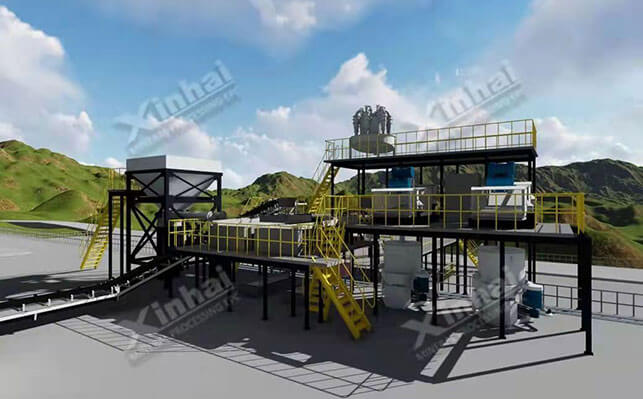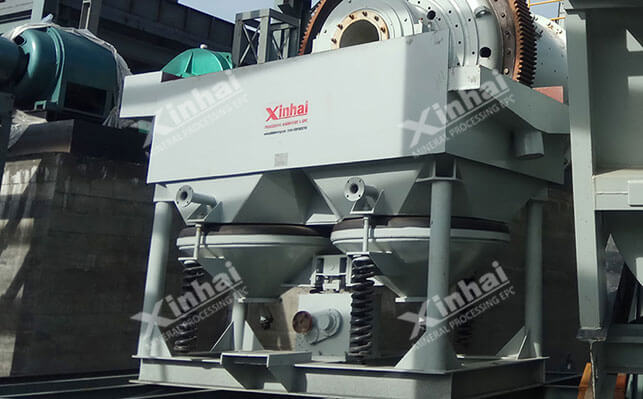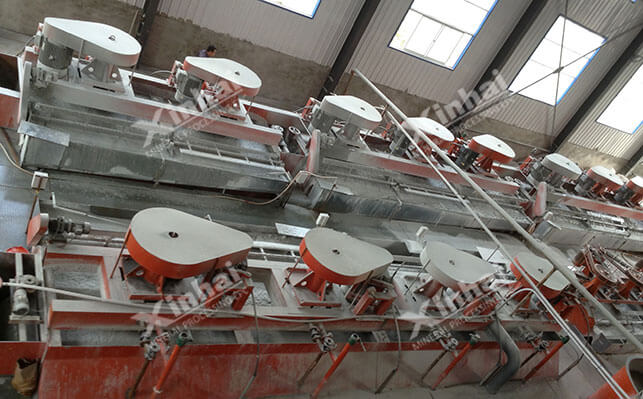This polymetallic barite mineral is mainly composed of sphalerite, chalcopyrite, galena, pyrite and a small amount of tetrahedrite. The rock-forming minerals are quartz, barite, sericite-chlorite, etc. The ore is disseminated and disseminated in dense veinlets, and most of the useful components are concentrated in the dense ore. Copper, zinc, lead, sulfur and barite are the industrial components in the ore. The associated elements with industrial value include gold, silver, tin and secret.

After the analysis of beneficiation test, the combined process of grinding, gravity separation and flotation was customized.
The polymetallic barite grinding process mainly adopts the stage grinding process. After a stage of grinding, the separation and tailing operation will be carried out. After regrinding, when the particle size reaches 87~90% and is less than 0.080mm, the copper-lead flotation process will be carried out. The reagent is aniline black powder, and the intermediate ore obtained needs to be reground.

The tailings are discarded by gravity separation method so that the target minerals can be preliminarily enriched before separation. The commonly used gravity separation and tail-throwing equipment includes spiral chute and shaking table. The tail-throwing is carried out through the process of one rough selection by spiral chute and one selection by shaking table. Tailings are mainly fine-grained slime, and the content of target elements in the discarded tailings is low, which realizes the purpose of improving the grade of tailings and reducing the total amount of tailings for subsequent operations.

Due to the complex nature of the polymetallic barite ore, the preferential-mixed flotation process is adopted, which includes the separation of copper-lead and zinc-pyrite. The copper-lead flotation reagent uses aniline black powder, and the zinc-pyrite flotation reagent uses mixed flotation. With the addition of collectors and foaming agents, aniline black powder is used to improve its separation. The tailings are extracted lithium by flotation, and finally qualified lithium concentrate, copper, lead, zinc concentrate and tailings are obtained.
The above barite beneficiation process flow is for reference only. In the actual concentrator, because the composition of barite ore is different, it can not be copied in the process flow. Therefore, it is recommended to carry out the beneficiation test first, and schedule the process plan according to the actual situation of the concentrator to achieve the ideal return on investment.